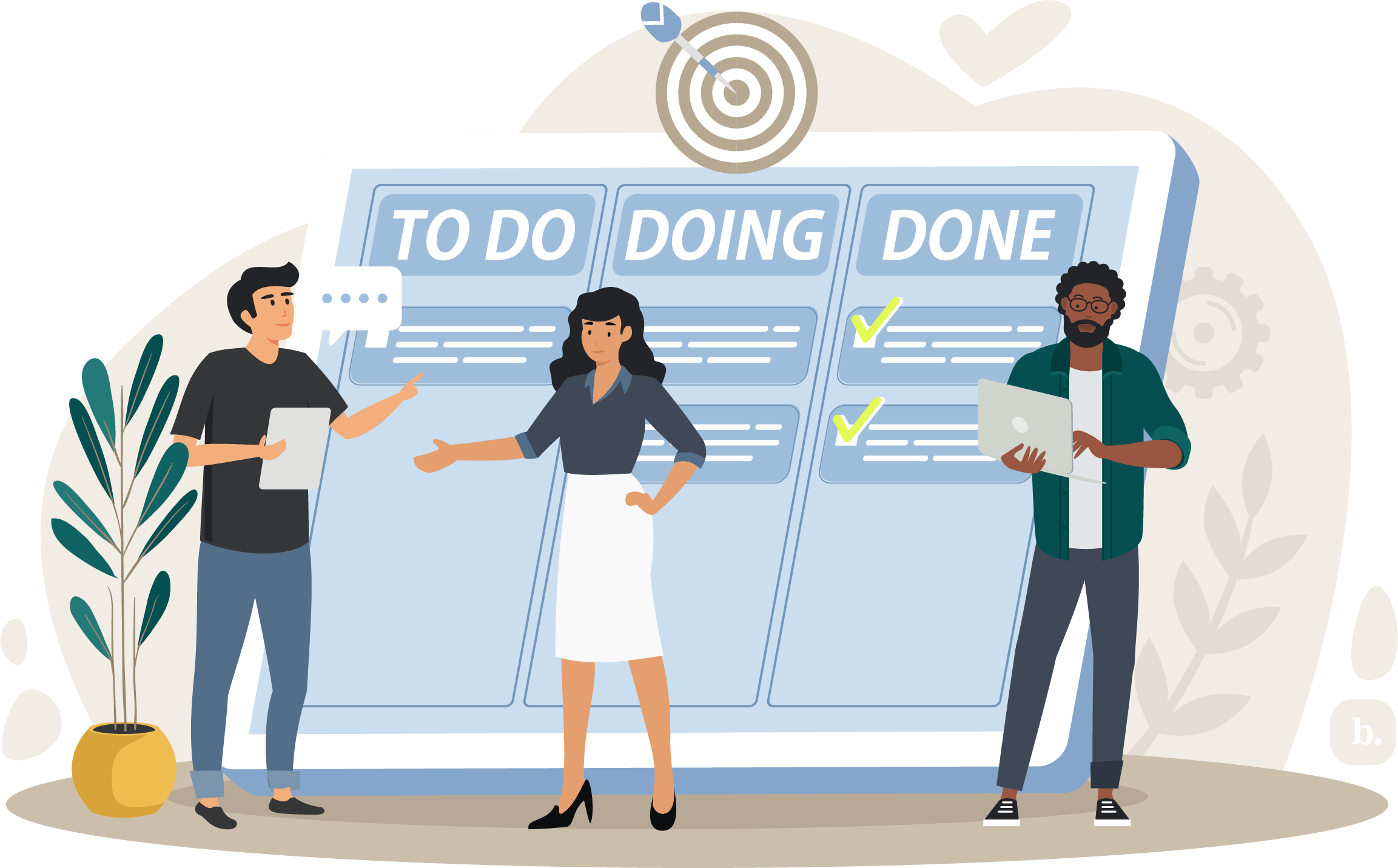MENU
Starting a Business
- Best Small Business Loans
- Best Business Internet Service
- Best Online Payroll Service
- Best Business Phone Systems
Our Top Picks
- OnPay Payroll Review
- ADP Payroll Review
- Ooma Office Review
- RingCentral Review
Our In-Depth Reviews
Finance
- Best Accounting Software
- Best Merchant Services Providers
- Best Credit Card Processors
- Best Mobile Credit Card Processors
Our Top Picks
- Clover Review
- Merchant One Review
- QuickBooks Online Review
- Xero Accounting Review
Our In-Depth Reviews
- Accounting
- Finances
- Financial Solutions
- Funding
Explore More
Human Resources
- Best Human Resources Outsourcing Services
- Best Time and Attendance Software
- Best PEO Services
- Best Business Employee Retirement Plans
Our Top Picks
- Bambee Review
- Rippling HR Software Review
- TriNet Review
- Gusto Payroll Review
Our In-Depth Reviews
- Employees
- HR Solutions
- Hiring
- Managing
Explore More
Marketing and Sales
- Best Text Message Marketing Services
- Best CRM Software
- Best Email Marketing Services
- Best Website Builders
Our Top Picks
- Textedly Review
- Salesforce Review
- EZ Texting Review
- Textline Review
Our In-Depth Reviews
Technology
- Best GPS Fleet Management Software
- Best POS Systems
- Best Employee Monitoring Software
- Best Document Management Software
Our Top Picks
- Verizon Connect Fleet GPS Review
- Zoom Review
- Samsara Review
- Zoho CRM Review
Our In-Depth Reviews
Business Basics
- 4 Simple Steps to Valuing Your Small Business
- How to Write a Business Growth Plan
- 12 Business Skills You Need to Master
- How to Start a One-Person Business
Our Top Picks
How to Be an Inspirational Leader

Table of Contents
Being an inspirational leader can be both fulfilling and challenging. Some companies provide extensive training and guidance, while others leave it up to the individual to navigate. Having a mentor can help you develop your strategy as you learn from their advice, but if you’re flying solo, there are plenty of resources to help you determine your personal approach to leadership. Here are some of the best practices to help you become an inspirational and effective leader.
How to be an inspirational leader
Operate with a growth mindset.

Whether you are beginning your first management role or have been a leader for decades, a key component of becoming an inspirational leader is regular self-reflection and improvement. A leader believes that they can keep developing their skills and abilities. These aspects of yourself and whether you are good or bad at something are not set in stone.
Having a growth mindset in the workplace means seeing limitless potential in yourself as a leader and in your team. Employees working with this philosophy are open to feedback, see failures as opportunities and are eager to learn. Leading with a growth mindset helps colleagues across your organization shift their perspective in the face of adversity, inspires innovation and professional growth, and increases accountability.
Deconstruct and reframe the idea of an “inspirational leader.”
To be an inspirational leader, you first need to remove the theoretical framework of what it means to lead or to inspire from your brain. While this may sound counterintuitive, leadership is about authenticity, which leads us to the second step: Start building your own definition.
There’s a socially constructed archetype for an inspirational leader: brave, decisive, tall, relentless, committed to the vision, charismatic, down-to-earth, thoughtful and creative. The list of adjectives could go on and on. The problem is that no one is entirely like that. Leaders’ behavior may mirror these adjectives occasionally, but no one is a robot who can fulfill all of those characteristics all of the time.
So how do you rise above this problem? Deconstruction.
Real people are not at their best 100% of the time. Real people don’t feel like working all the time. Real people have flawed and panicky moments; that does not make them less inspirational. Quite the opposite, actually. Accept there will be days when you nail it and days when you feel like you fall short. Set attainable, specific goals for yourself to become an inspirational leader, and choose to view your mistakes with a growth mindset.
The best managers earn employee trust by being dependable and following through on commitments.
Allow yourself to become vulnerable.
People become inspired by getting rid of the masks and the veils of obligation and stepping into a place of vulnerability. You have to find a space where you are comfortable with your shortcomings and embrace them – not because you read it in a book or heard it in a seminar, but because you have found out just how liberating it is to be you.
That’s the most inspiring thing you can do. You can’t demand anything of others, because that’s not inspiring – that’s pressure. Inspiration is breathing, and breathing is about freedom.
You can’t believe that you are going to change people. You can’t want that either. You have to see the best in everyone and try to shape and orchestrate the organization in a way that leverages the best that each person brings to the table, while bridging their shortcomings through how you organize the team, rather than through pressure for self-improvement.
Leadership comes from the way you behave, and the way you behave is a reflection of your habits and values that are carved out like glaciers over long periods of time. Superficially changing these habits or behaviors will only take you so far. If you emulate compassion, thoughtfulness or creativity, that may work at first, but it will slowly become a cage that engulfs your expected behavior.
Embrace your flaws and unique characteristics.

If you have successfully given up on the constructs of leadership and inspiration, your glass is now empty, and you may begin to fill it up again with your own self-brewed tea. What are your unique personality traits, strengths and weaknesses? And how can you leverage them?
Some people can lead by being vocal; others, by staying quiet. Some might lead by being creative; others, by being highly methodical. Some might lead by being challenging and inquisitive; others, by being acquiescent and thorough. Some might be exceptional at micromanagement; others, at empowering and releasing others.
People don’t all value the same things. Some may want a partner who is always calling to check up on them. Others may find the same behavior annoying and smothering. Begin to identify who you are – not who you think you should be based on theory, but who you feel comfortable being.
This may seem trivial, but it’s not. Embracing yourself means accepting all of the thousands of things you are not. For every little thing that we are, there are thousands of things that we are not.
It’s a lot easier to build a team if you embrace who you are. It will be easier to recognize the gaps, and easier to accept these same gaps in other people. If the “leader” is always trying so hard to be things they are not, they will stimulate the same behavior in others. This will promote an environment where it won’t be easy to understand where the shortcomings are since people will be hiding them as something “bad.” But shortcomings are the foundation upon which amazing teams are built.
If you discover a more authentic way to relate to yourself, though, that will eventually percolate through the deepest parts of your being and will come across to others as something genuine.
Ultimately, you will be eternally dissatisfied if you are trying to lead for others. That’s an impossible task because you have no control over how others will see and react to your style. You do have control over how you respond to your method of dealing with yourself, and if you figure that part out, you will create room for a more authentic self to form. With this room, you will be able to breathe and inspire. Whether others will want to follow your lead or not is irrelevant – especially if you plan on being a leader. [Read related article: Dose of Motivation: 52 Inspirational Quotes About Success by Influential CEOs]
Leadership mistakes to avoid
As you settle into your leadership position, it is easy to develop bad habits. You may not even realize the negative impact at first. Here are some of the common missteps to avoid when shaping your behavior as a leader.
Neglecting to give feedback
Coaching conversations can be uncomfortable, but growth does not happen for anyone who stays in their comfort zone. Avoiding these important conversations with your employees not only stunts their growth as professionals, but also holds you back from being a great leader.
The most effective approach to feedback is giving it in a timely manner with open communication. In these conversations, set clear expectations and ensure your employee walks away with a solid understanding of how to handle the situation, project or task in the future.
Do not wait until performance reviews to discuss where they’ve missed the mark and how to improve. If your team is unaware about how they’re doing, they’ll continue making the same mistakes and failing to reach their full potential.
Regularly recognizing great work is just as important as course-correcting negative employee behavior. Positive feedback motivates and empowers by letting employees know that their hard work is appreciated. Whether it’s in person, via email, on your company Slack channel or in a weekly team meeting, give your employees a shoutout for their recent accomplishments.
There are many tools that track and measure employee performance. Using these resources will help you gather unbiased data and metrics on your team’s performance to bring clarity and fairness to coaching conversations.
Operating as a task manager instead of a people leader

While your team functions to accomplish specific tasks, effective leaders do not get lost in the weeds of managing daily activities and operations. Delegate wisely. Do not take on too much for the sake of being in control and having a project done a certain way. It is easy to fall into the trap of picking up the slack for your team to ensure you maintain a positive image and reputation as a manager. With this approach, it’s only a matter of time before you burn out and end up with a disengaged team.
Employee performance improves when you challenge your team, give them more opportunities and trust in their abilities. If they fail, the results may not have turned out well that time, but their output will be even greater in the long run as they learn and grow from that experience and your guidance.
Managing in this way takes more of your time and energy, but it will make you a more inspirational leader. Prioritize getting to know your employees, observing their diverse skills and abilities in action, and finding ways to invest in their development.
Being unavailable and disconnected
Busy leaders often get bogged down with their own work, meetings and commitments. For the sake of time, it may be tempting to take a hands-off approach after assigning projects. Instead, plan to follow up and create channels of communication where employees can find support throughout their progress. Find the balance between giving your employees freedom and being there to help along the way as needed.
Are you managing employees remotely? Employee engagement will need to be more formally scheduled to ensure your staff feels like they have access to you. Commit to regular virtual check-ins. Set your team up with the right tools and resources to connect with each other across platforms and collaborate, especially if the team is remote or hybrid. Investing your time and effort in strengthening teamwork will have endless benefits.
Lastly, make time for fun! For leaders working in an office or hybrid setting, it’s easier to have informal conversations and get to know your team in more casual circumstances. If your team is remote, initiate creative activities and resources to virtually bring your team together. Even the smallest gestures have the potential to boost morale, increase productivity and improve employee retention. Try virtual birthday gatherings, online games, shared playlists, company retreats, webinars, lunch-and-learn sessions, mentor programs, happy hours, and other engaging activities to help your team build more significant connections.
Additional reporting by Gabriel Fairman.








